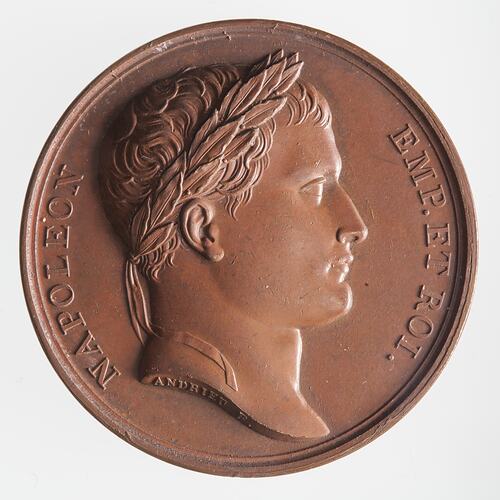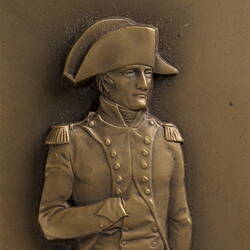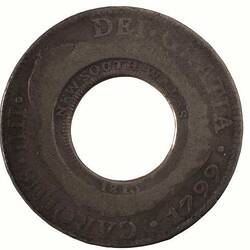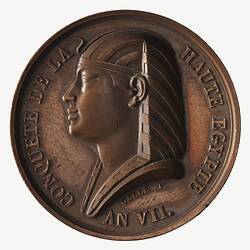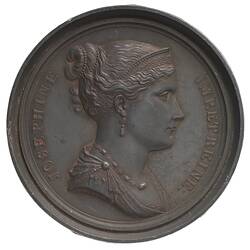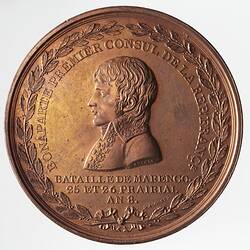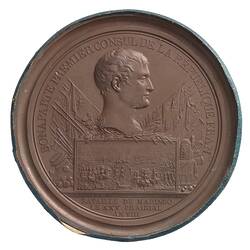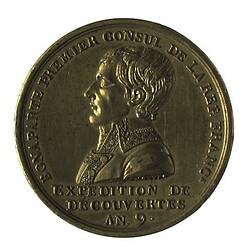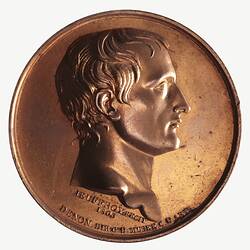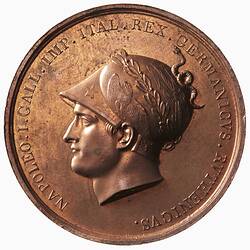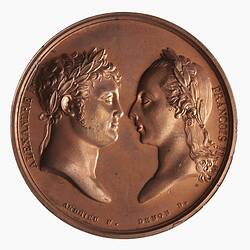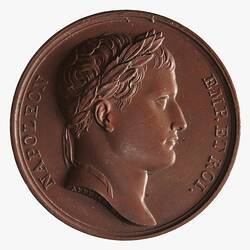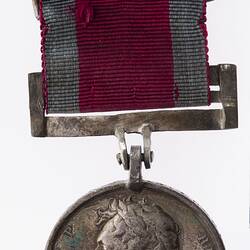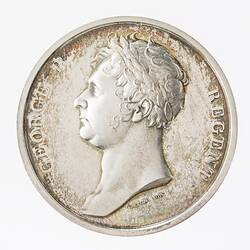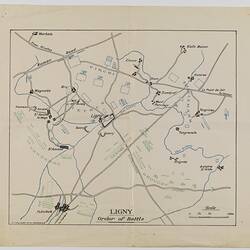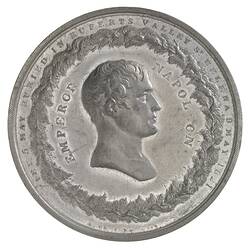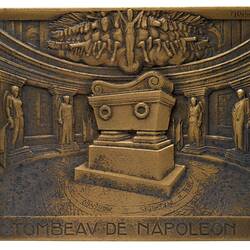Napoleon I (1769-1821) is the focus of endless fascination. His dramatic life, the myths surrounding him, the complexity of his personality, and his effect on the lives of many people and the course of history, have resulted in a larger than life reputation.
Napoleon is still a divisive figure, maligned by many (as a warmonger who caused huge numbers of deaths, and as a looter of art and antiquities) and admired by others (as a genius and social reformer) . The Corsican-born French leader, who rose to power in the Revolutionary period, then became Emperor of France, commissioned artworks to promote himself, and to create and reinforce an impression of power and nobility. The importance of symbols and imagery for use in propaganda was a constant throughout his life, in artworks, ceremonies, in the military and in his court. Many medals were issued to commemorate most of the major events in his life, and after his death, medals were still being issued to honour him.
A considerable number of the portraits of Napoleon on the medals show him wearing the gold laurel leaf crown, described as "laureate" in the catalogue. The direct visual link with the portraits of Roman rulers on their coins clearly demonstrates Napoleon's wish to legitimise his power, and suggests some kind of continuity with the Roman Empire.
Medals were issued for a wide range of events. In the Museums Victoria collection, there are many medals commemorating military victories and defeats, such as the Battle of Marengo, 1800, the Battle of Wagram 1809, and the Battle of Moscow (or Borodino), 1812. Other commemorations include coronations, education, the introduction of the civil code, marriage to Marie-Louise in 1810, birth of the King of Rome, 1811, Napoleon's return to France from exile in Elba 1815, and his death in 1821. Medals issued posthumously include the grave on St Helena 1840, and his tomb in Les Invalides.
The museum holds a number of 1821 St Helena coins which were minted by the Soho Mint in Birmingham, England, for use by the large contingent of British soldiers stationed on the island to prevent Napoleon from escaping. By the time the coins arrived, Napoleon had died. Ten years later, most of the coins were returned and sold back to the Soho Mint as copper.
Napoleon had a few connections with Australia, although most of these are not represented on medals. A medal, commemorating the Baudin expedition to Australia in 1800, bears Napoleon's image. Nicolas Baudin was in command of two ships, Le Geographe and Le Natural-iste, and his instructions were to explore the coast of southeast Australia and undertake scientific observations. It is likely that he was investigating the British colonial activity in the area as well. Unlike Lapérouse (1741-circa 1788), who gave out commemorative medals to the first peoples he encountered, Baudin refrained from giving out these medals, although it is believed that he left four on the graves of two warriors who had killed each other near King George Sound/Menang Koort (Hetherington p. 52). Joséphine, (1763-1814) Napoleon's first wife collected exotic plants and animals at Château de Malmaison, including kangaroos, emus and black swans, brought to France by Baudin's expedition. The emus included a King Island/Erobin dwarf emu and a Kangaroo Island/Karta Pintingga dwarf emu (both now extinct). The emu remains are now in European museums (Horn).
Napoleon's friendship with the Balcombe family on St Helena is another Australian connection. William Balcombe (1779-1829) was working on the island as a merchant. His daughter Betsy (1802-1871) befriended the exiled Napoleon. Balcombe became Colonial Treasurer in New South Wales in 1824, and his son Alexander (1811-1877) took up land at Mt Martha in Victoria. He named his property The Briars after the family home on St. Helena. His granddaughter Dame Mabel Brookes (1890-1975) donated Napoleonic memorabilia to the National Gallery of Victoria. Some of it had been on display at The Briars, but had to be moved to a secure location, after theft occurred in 2014.
Napoleon was well aware of his legacy, and ensured that his version survived through art and the written word. Medals are portable, collectable, and can be disseminated widely. So it is not surprising that the remarkable story of one of the most well-known and intriguing characters in history lives on in this museum numismatics collection.
References:
Alexander, David Thomason 2022 A Napoleonic Medal Primer. Amazon. Available online at Newman Numismatic Portal https://nnp.wustl.edu/library/book/618630
Hetherington, Michelle 2016 "Napoleon's France: Ambitions, Frontiers, Claims" in Fornasiero, Jean, Lawton, Linda, and West-Sooby, John, eds. 2016. The Art of Science: Nicolas Baudin's Voyagers 1800-1804. Wakefield Press, Mile End, South Australia p. 50-62
Horn, Caroline 21 Oct 2023 'There are no emus on Kangaroo Island, so why is there an Emu Bay?' https://www.abc.net.au/news/2023-10-21/kangaroo-island-s-dwarf-and-mainland-emus-died-out/102885542 ABC News website, accessed 25 Oct 2023
National Gallery of Victoria 2012 Napoleon: Revolution to Empire. Council of the Trustees of the National Gallery of Victoria, Melbourne.
Zamoyski, Adam 2018 Napoleon: The Man Behind the Myth. William Collins, London.
Further reading:
Laskey, J. C. 1818 A description of the series of medals struck at the National medal mint by order of Napoleon Bonaparte, commemorating the most remarkable battles and events during his dynas-ty. Printed for H. R. Young, London. Available online at https://catalog.hathitrust.org/api/volumes/oclc/4567201.html
More Information
-
Keywords
-
Localities
-
Authors
-
Article types
